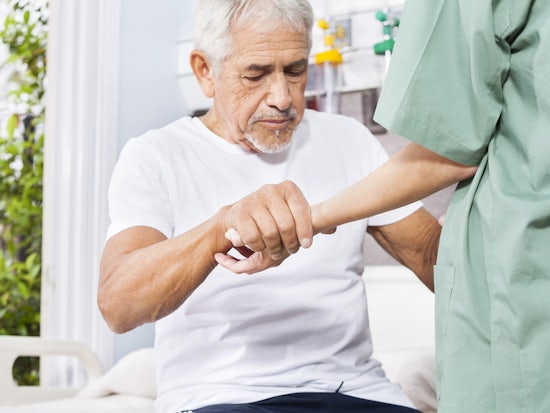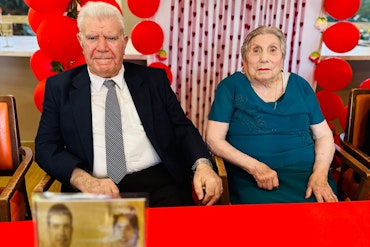Act FAST to reduce impact of stroke
Families, friends and carers of older Australians are once again being reminded of the signs, symptoms and time urgency of stroke with the start of National Stroke Week and the launch of the new Clinical Guidelines for Stroke Management.

65 percent of stroke survivors suffer a disability (Source: Shutterstock)
The annual awareness campaign, run by the Stroke Foundation, encourages all Australians to take action to prevent and be aware of stroke.
Minister for Health Greg Hunt was one of the first to shine the light on the week of awareness by launching National Stroke Week and the Guidelines at Parliament House.
Stoke Foundation Chief Executive Officer Sharon McGowan has welcomed the release of the guidelines as part of National Stroke Week, saying it is an important step forward in improving the treatment and care of all Australian stroke patients.
“This year alone Australians will experience more than 56,000 strokes – that’s one stroke every nine minutes,” she explains.
“Advancements in stroke treatment and care mean stroke is no longer a death sentence for many, however patient outcomes vary widely across the country depending on where people live.
“We now know what ideal stroke treatment and care looks like, we must focus on giving all patients’ access to it, in particular those living in regional Australia where stroke is having its greatest impact.”
The key changes to the guidelines include:
- Education of GP reception staff in the FAST signs of stroke so that they call triple zero immediately at the first sign of a stroke.
- It is no longer recommended to get patients up and moving within 24 hours of stroke onset, however all stroke patients should be moving within 48 hours.
- All acute stroke services should implement standard protocols to manage fever, glucose and swallow difficulties in stroke patients.
- Endovascular thrombectomy – or clot retrieval – is now standard care for appropriate patients.
- The minimum amount of scheduled rehabilitation therapy for stroke survivors is now three hours a day – a threefold increase from the previous guidelines.
- Comprehensive discharge care plans, which address the specific needs of the stroke survivor, should be developed in conjunction with the patient and carer prior to discharge.

Even with the announced Guideline changes, Ms McGowan says the first step in ensuring all Australians have access to world-class stroke treatment was educating every household on the signs of stroke, dialling triple zero and getting to hospital quickly.
“The impact of stroke varies, which is why it is so important to seek treatment at the first sign of stroke,” Ms McGowan explains.
“It is a leading cause of disability and can also impact mental health – 65 percent of stroke survivors suffer a disability which impedes their ability to carry out daily living activities unassisted, so in many cases family members become carers.
“Because the brain controls everything we do – the way we think, move, speak, eat – stroke can leave people with a wide range of physical and cognitive changes and disabilities.
“Some of the effects can include paralysis, speech and swallowing difficulties, problems with memory, hearing and eyesight – it all depends on where in the brain the stroke occurs and how severe it is.
“Stroke happens in an instant, attacking the brain at a rate of 1.9 million cells a minute, but with the right treatment at the right time, patients can make a full recovery.
“This is why it is important, especially for the loved ones of older Australians, to recognise the signs of stroke and know to call triple zero at the first sign.
“Paramedics, nurses and doctors can only help if people recognise the signs, dial triple zero and get to hospital quickly – time saved equals brain saved.”
She adds that stroke is most common amongst older Australians, and says that 80 percent of strokes can be prevented.
“Stroke doesn’t discriminate – it can strike at any age,” she says. “However, it is more common in older Australians.
“Around 70 percent of stroke survivors in Australian are over the age of 65.
“The statistics tell us that men tend to have strokes at a younger age – between the ages of 55 and 84 men are more likely to have a stroke than women, and that more women over the age of 84 are affected by strokes.
“Older Australians should ensure they have regular health checks with their GPs and know the FAST signs of stroke.
“Risk factors for stroke include high blood pressure, atrial fibrillation (or irregular heartbeat), physical inactivity, smoking and poor diet.
“These risk factors can be reduced by leading a healthy lifestyle and taking medication where needed.”
As part of National Stroke Week (running from 4-10 September), a number of activities, events and health checks will be held around the country.
Find out more about National Stroke Week, the symptoms of stroke and how to act FAST.























